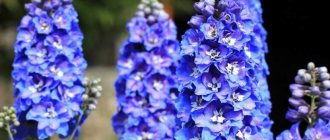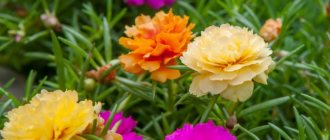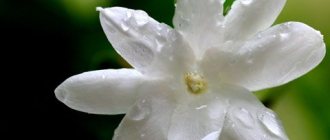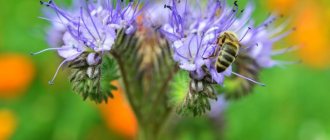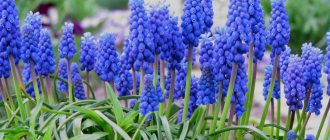Fragile, dressed in soft white and sometimes pale pink petals, lilies of the valley intoxicate everyone with their drunken aroma. Rare of their kind, they are listed in the Red Book.
Beautiful lilies of the valley become a kind of muse for florists, inspire artists to create still lifes, and photographers for a new type of photography - professional photography of flowers. Perfumes, pets, household appliances, cafes and restaurants are named after them.
Photos of lilies of the valley, roses and daffodils in flower shop windows are especially popular. Widely used in perfumery.
Short story
They are also popularly known as: konvaliya, May and field lilies, mayweed, cherry. The plants owe their name to the works of the outstanding botanist Carl Linnaeus. The literal translation of the flower is “lily growing in the valley.”
There are several possible origins. According to one of them, the name is borrowed from the Polish word “lanuszka” due to the similarity of the leaves with the ends of the ears of a wild deer. In other words, these are combinations of two words “incense” and “breathe” because of the pungent and fragrant aroma.
Lily of the valley is a forest perennial plant that grows in the Northern Hemisphere. Most often found in cool or damp places.
Walking through the forest, you can sometimes come across entire clearings of lily of the valley leaves, but the bells themselves are not visible. The whole reason is that the maximum life span of the rhizome is up to 21 years.
Bottom line
The fragile and delicate lily of the valley flower with miniature snow-white bells enchants at first sight. This symbol of tenderness and boundless love, even in the photo, seems like a forest wizard, giving a feeling of joy. Its aroma may seem very strong to some, but its truly enchanting beauty is unlikely to leave anyone indifferent.
Author: skywriter13
Bloom
The first flowering occurs at 7-8 years, at 10-12 years they lose this opportunity. New dark green leaves are formed every spring, the ability to bloom appears after 2-3 years.
If you count, it turns out that during its entire short life, flowering occurs only 2-3 times. Flowering duration is within one to two weeks.
The powerful smell and pollen attract bees and bumblebees. The fruit of the flower is a round orange or red berry. The plant itself is poisonous, but is widely used in modern medicine. It has been used for a long time.
Cultivation and propagation of lily of the valley should be done very carefully, observing the usual safety measures.
Main garden varieties
Albostriata has atypical leaves with creamy white stripes, while Lineata has yellow stripes. After flowering, these varieties continue to delight the eye with their decorative leaves. That is why they are most often used in landscape design.
Flore Plena is a variety with 12 double flowers on an inflorescence, the stem height of which reaches up to 25 cm.
Latifolia - the main difference is the flowers are of an atypical pink color and the leaves are wider than other species.
Pink petals are characteristic of Rosea flowers, of which up to 14 bloom on an inflorescence.
Yellow leaves come from Aurea, a variety that is distinguished by its most golden color.
Hardwick Hall is a modern variety with yellow-green edges on the leaves.
Viktor Ivanovich is an extravagant and tallest variety of lily of the valley, the stems of which can reach 50 cm. Up to two dozen large snow-white flowers bloom on the inflorescence. After they bloom, red fruits appear, giving the flower additional attractiveness.
Application in medicine
- improvement of heart function
- strengthening blood vessels
- insomnia and neuroses
- included in allergy medications
- for high fever and headaches
- for the treatment of cholecystitis and relief of inflammatory processes
- psychiatric disorders
Take medications based on medicinal flowers only after consulting a doctor and strictly observing the dosage of use.
Description of pharmaceutical properties
Lily of the valley is a medicinal plant. All its parts contain a large amount of cardiac glycosides, which are characterized by high cardiac and biochemical activity. These are mainly convallotoxin and convalloside. In addition to good therapeutic properties, they are unstable and therefore do not accumulate in human organs and tissues. Therefore, extracts obtained from the processing of plant materials are used in medicines for the treatment of heart diseases. In addition, convalia has a good calming effect, so it is often prescribed in herbal preparations in combination with valerian, motherwort, hawthorn and their analogues.
Downsides of blooming lilies of the valley
A bouquet of lilies of the valley should not be kept in a small, cramped and closed room. Especially in the bedroom or room of a small child. Fans of this plant often need to ventilate the room. Due to the strong aroma, you can simply get poisoned.
Symbolism and interesting facts
This spring plant has the most romantic symbolism - it is associated with tender feelings, sincere love, fidelity and purity of soul. It is not surprising that at all times they were admired by creative people, immortalized in poetic lines and on canvas.
In France, they even celebrate the day of this flower, which falls on May 1st. In Finland it is the national plant and is depicted on coins. It is believed that lilies of the valley received as a gift on May 1 and then dried can become a real amulet for happiness and good luck. In Holland, newlyweds should plant these flowers in the garden immediately after the wedding - as a sign of love that will never fade.
Composer Pyotr Tchaikovsky admired lilies of the valley. Considering them a source of inspiration, he even planted them in the park behind his house. An interesting fact is that in many portraits Nicolaus Copernicus was depicted with a bouquet of lilies of the valley in his hand. This is explained by the fact that the famous astronomer was also popular as a healer, and lilies of the valley were considered a symbol of healing.
Caring for lilies of the valley
Lily of the valley adapts well to any weather conditions. But it does not tolerate drafts and direct sunlight.
The downside is low frost resistance and late flowering. In the first case, after 6 years, in the second, after 3 years.
The best time for planting is mid-autumn. The soil is prepared in advance; fertilizers can be used. Each housewife plants in her own way, but in general terms, each flower should be planted at a distance of 10-15 cm, 15 cm deep into the ground and sprinkled with 1-2 cm of light soil.
Water thoroughly with water at room temperature. In winter, cover with any materials to maintain warmth. Planting can also be done in the spring, but such a flower will be painful and will not bloom this season.
Bacopa - description of the species, cultivation, care, reproduction + 74 photosGarden hibiscus - types, description, planting, care and propagation + 69 photos
- Celosia - growing from seeds and seedlings, planting in the ground and care rules + 80 photos
They do not need care. You just need to maintain moisture, remove weeds and loosen the soil around from time to time.
Lilies of the valley are very aggressive plants; in the overall bouquet they crowd out and lead to rapid withering and death of other flowers.
Suitable soil
Lily of the valley flowers love moist soil, rich in organic components, and also having a neutral or slightly acidic index.
In advance, you need to add peat or humus, a little superphosphate and potassium sulfate to the soil. It is advisable to fertilize the soil in the spring.
How dangerous is the flower?
When working with lily of the valley bushes, it is better to use gloves, since all parts of the plant contain toxic components.
You should also explain to children that they should not pick, let alone eat, red berries with seeds that form on the peduncles after flowering.
Rosea
For this variety, it is preferable to choose moderately shaded places in the garden. It is not recommended to plant this variety of lily of the valley in flower beds, since it grows strongly and displaces neighboring plantings.
The best use of Rosea is to uniformly cover the soil with a fragrant, flowering carpet. The variety goes well with ferns, aquilegia, lungwort. "Rosea" have a pale pink color and a persistent sweet smell. Flowering begins in mid-spring and continues until early summer.
Chemical composition
Leaves and stems contain:
- up to 1% diostegin – steroid saponin;
- alkaloids;
- quercetin, vitexin – flavonoids, P-vitamin.
Active composition of rhizome:
- slime;
- starch;
- ascorbic acid, carotene;
- glucose, fructose – natural sugar, processes carbohydrates;
- nitrogen compounds;
- tannins;
- zinc, manganese, copper, etc. – microelements;
- cardiac glycosides.



